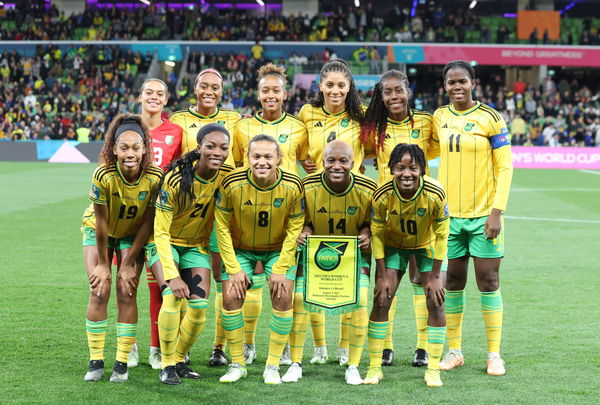
via Imago
230802 — MELBOURNE, Aug. 2, 2023 — Jamaica s starting players pose for photos before the Group F match between Jamaica and Brazil at the 2023 FIFA Women s World Cup in Melbourne, Australia, Aug. 2, 2023. SPAUSTRALIA-MELBOURNE-2023 FIFA WOMEN S WORLD CUP-GROUP F-JAM VS BRA DingxXu PUBLICATIONxNOTxINxCHN

via Imago
230802 — MELBOURNE, Aug. 2, 2023 — Jamaica s starting players pose for photos before the Group F match between Jamaica and Brazil at the 2023 FIFA Women s World Cup in Melbourne, Australia, Aug. 2, 2023. SPAUSTRALIA-MELBOURNE-2023 FIFA WOMEN S WORLD CUP-GROUP F-JAM VS BRA DingxXu PUBLICATIONxNOTxINxCHN
The echoes from Football Stadium Australia have faded, the scarves have been carefully stowed away, and regular TV programming has reclaimed its spotlight.
The FIFA Women’s World Cup has drawn to a close. It left behind a legacy that ignited a newfound enthusiasm for women’s sports in Australia. The question now lingers: Can this fervour be sustained, and will it leave a lasting imprint on the country’s sporting landscape?
ADVERTISEMENT
Article continues below this ad
A sudden shift in the football environment
An early response surfaced this week with a significant announcement from the Australian Football League (AFL). The governing body for Australian rules football?a sport predominantly played within the country’s borders. The AFL declared that equal prize money would be bestowed upon both the men’s and women’s leagues. This landmark decision translates to nearly doubling the prize money for the women’s league, raising it to $708,000.
Gen Dohrmann, President of Women Sport Australia, suggests that progressive steps were likely influenced by the energy generated by the FIFA Women’s World Cup. The widespread attention it garnered from the tournament resonated strongly with the nation, reaching far beyond the boundaries of sports.
The World Cup witnessed unprecedented support for the Matildas, Australia’s national women’s soccer team. This fervent backing prompted the government to pledge significant investments in women’s sports. The joint hosts of the World Cup, Australia and New Zealand, experienced record domestic TV viewership. FIFA women’s attendance figures were just impeccable.
Prime Minister Anthony Albanese promises $128 million for enhancing sporting facilities. It will bring equipment for women and girls. In tandem, state governments have pledged substantial financial contributions. In concrete terms, the women’s game received $29 million compared to the men’s $217 million.
Matthew Klugman, an associate professor of sports studies at Victoria University in Melbourne, deemed this move a mere gesture. He emphasised that addressing the players’ calls for an extended season and better pay should be paramount. Last season, female players earned between $26,000 and $46,000, often juggling second jobs.
While the move towards equality is notable, it’s clear that there’s more work to be done.
ADVERTISEMENT
Article continues below this ad
Women and Equal Ground in Sports
Kate McCarthy, an assistant coach with the Western Bulldogs AFL Women’s team, recognized this progress as “a step forward.” Nonetheless, she underscored that a longer season and professional salaries remain key priorities.
This narrative resonates in rugby union as well. The women’s team, the Wallaroos, expressed their concerns through a social media statement aimed at Rugby Australia. The statement highlighted discrepancies in investment and resource allocation. It is between the men’s and women’s games, urging for equitable treatment and professionalization.
ADVERTISEMENT
Article continues below this ad
The support and enthusiasm demonstrated during events like the World Cup and the AFLW kindle hope that the momentum can be maintained, fostering a brighter future for women in sports.
Watch This Story: Despite Lionel Messi Rejecting 1637527500 James Harden Pushed to Follow in His Footsteps in a Country 7000 Miles Away
ADVERTISEMENT
ADVERTISEMENT
ADVERTISEMENT
ADVERTISEMENT

